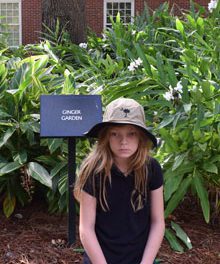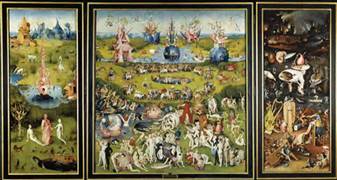The Christmas bird count in my neighborhood recently noted sightings of 66 different species. Birds are welcome splashes of color in our gardens and the seed producing shrubs and trees that attract birds also add color to the landscape during the months when many other plants are dormant. There are also fewer insects this time of year, so the availability of other food sources will help to keep them nearby. Almost every terrestrial bird species eats the seeds and berries our Lowcountry gardens can provide. These mild days are perfect for enjoying the outdoors and I will be out there making my lists of what I need to add to invite still more birds to the yard.
Mahonia eurybracteata (‘Soft Caress’) is an example of a plant that provides year round interest and food for the birds. It has lovely yellow flowers followed by bright blue berries. Unlike its invasive cousin, this beauty has slender medium green leaves without any spines. It thrives in almost any well-drained soil with filtered light to shade. The mature size is 3’ by 3.5’ and it is a tidy shrub that stays in bounds. Because of its dwarf stature it is suitable for containers also.
The underused winterberry holly, Ilex verticillata, makes a bright pop of color this time of year. When this deciduous native loses its leaves, all you see is the multitude of bright red berries along the stems. It prefers a moist woodland setting. It is a dioescious, meaning it needs a male plant to pollinate the flowers on the female. These plants tend to grow in thickets in the wild, but will do fine as individual specimens in our gardens. Because many dioecious plants are wind-pollinated, it is best to have a male plant within 25’ for the best fruit set.
For an amazing show of color the Lords Holly, Ilex rotunda, can’t be beat. This large, stately tree has such an abundance of berries its branches hang down from the weight. The sheer number of fruit will keep many flocks of birds happy.
Another underutilized native shrub that attracts wildlife is the Cyrilla racemiflora or Titi. This one is perfect for that sunny spot that tends to stay moist. I am afraid it is a water hog, and I would not plant it where it needed a lot of supplemental water, but if you have a boggy spot, this one is for you. It attracts terrestrial and water birds, butterflies and bees and provides fall color too. This native can get to be 30’, but I have seen one pruned as a large shrub in Charleston and it was very attractive to me.
The showy red seed pods on the Southern Magnolia provide food as do the Eastern Red Cedars and Wax Myrtles, Dogwoods, Witch-Hazel, Maples. Don’t forget, plants like the American Beautyberry, Fire Bush, perennial grasses, rudbeckias, helianthus, Erythrina, and coreopsis all have seeds heads. To think we all pay big money for wild birdseed in stores while it is possible to fulfill all a bird’s dietary needs, along with providing some color – on the wing and on the stem – in our gardens.
In keeping with the winter garden theme, the Bamboo Farm in Savannah is offering a class on “Creating a Landscape with Exceptional Winter Interest” on January 31st. Call (912) 921-5460 to register for the workshop. It runs from 10 to 11:30 a.m. and the cost is $12 per person.
As you peruse those seed and plant catalogs, be sure to put a plant that multi-tasks on your list; one that provides beauty throughout the seasons, reduces air pollution, produces clean oxygen and, best of all, provides food for the local bird population. The South Carolina Native Plant Society and the Audubon Society both offer lists of plant material appropriate for the Lowcountry. Happy New Gardening Year.









